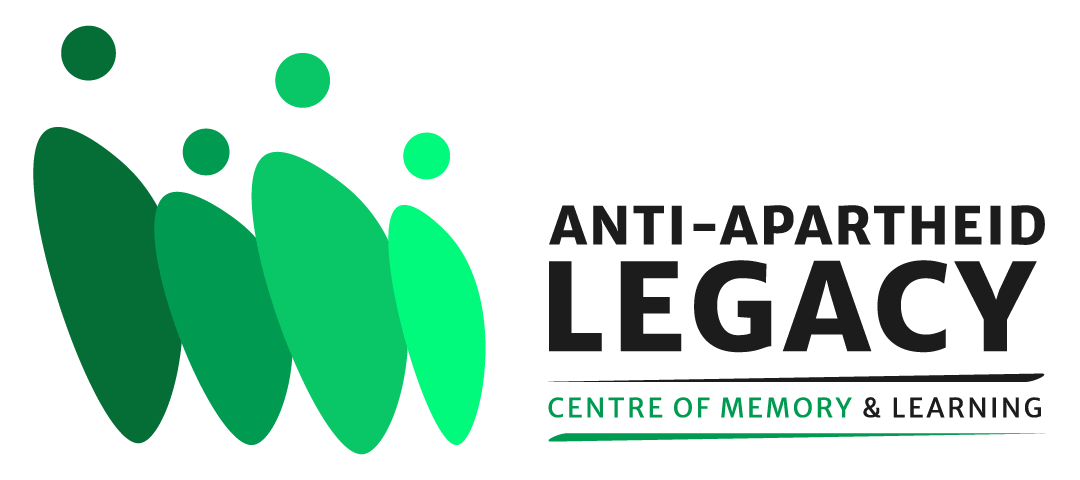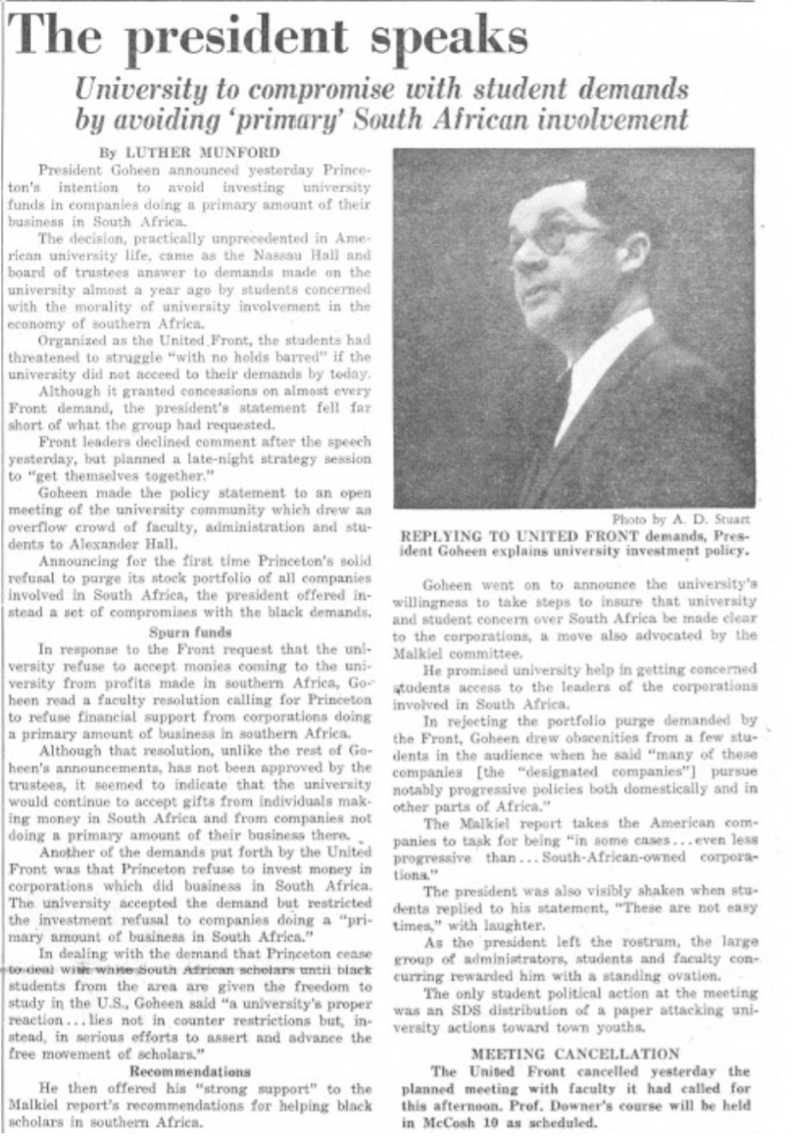American Youth Solidarity for the South African Anti-Apartheid Struggle, 1969
Web page header image: Nassau Hall protest, April 1978, Princeton Alumni Weekly Photograph Collection.
Hi, I’m Brinta, a recent graduate from the LSE MSc program in the History of International Relations. My interest in activism – particularly youth activism – began during my undergraduate studies, when I wrote my BA History dissertation on the political power of music. Titled “Hip-Hop Ain’t Dead, We Still Have a Dream,” it explored the history of hip-hop as a form of protest and consciousness-raising, especially in Black communities. That research sparked a deep interest in how young people use culture, voice, and collective action to challenge power and fight for justice.
While much of the spotlight on youth activism in the anti-apartheid struggle focuses on the 1976 Soweto Uprising, I was especially drawn to the less historically focused but vital period that preceded it. I examined how South African youth, through the emergence of the Black Consciousness Movement (BCM) under the key leadership of Steve Biko and Onkgopotse Tiro, and American university students, particularly at institutions like Princeton, began building international solidarities that would ultimately help fuel a decades-long global solidarity movement.
”“Liberation, therefore, is of paramount importance in the concept of black consciousness, for we cannot be conscious of ourselves and yet remain in bondage. We want to attain the envisioned self which is a free self.” Steve Biko
Biko, ‘I Write What I Like: Selected Writings’ (Chicago: University of Chicago Press, 2002), p 49.
I particularly enjoyed researching American youth activism in the late 1960s, especially the 1969 divestment campaign at Princeton University. I uncovered a wealth of primary sources through The Daily Princetonian’s online archive, which offered firsthand insight into the ideas and tactics that students used to challenge their university’s financial complicity in apartheid.
The Early Years of American Youth Solidarity
Support for the South African anti-apartheid movement among American youth gained momentum in the aftermath of the Sharpeville Massacre, a turning point that exposed the violence of the apartheid regime to the world. This international awareness grew alongside the global decolonisation movement, the Vietnam War protests, and domestic civil rights struggles, creating fertile ground for transnational solidarity.
American students increasingly recognised the parallels between systemic racism in the US and apartheid in South Africa. Influenced by the Civil Rights and Black Power movements, as well as by powerful voices like Martin Luther King Jr. and Malcolm X, many young Americans began to see their fight against racial injustice as part of a global liberation struggle. Student-led organisations such as the Student Nonviolent Coordinating Committee (SNCC) and the South Africa Relief Fund (SARF) mobilised support for South African liberation and called for US universities to cut financial ties with the apartheid regime.
The 1969 Princeton Divestment Campaign
The Princeton divestment campaign of 1969 was one of the earliest and most formative expressions of American student support for the anti-apartheid struggle. It was spearheaded by a coalition called the United Front of South Africa, made up of the Princeton Association of Black Collegians (ABC), the Pan-African Students Organisation, the Committee for Black Awareness, and a group of radical white students.
On 17 February 1969, they submitted a letter to the university president outlining six key demands, including a call for Princeton to divest from corporations profiting from South Africa’s apartheid economy. Their demands were both symbolic and strategic linking the university’s financial practices to the machinery of apartheid and challenging the moral integrity of the institution itself.
The Daily Princetonian played a vital role in amplifying these voices, ensuring that the campaign’s message resonated beyond campus boundaries. Although the campaign failed in achieving full divestment at the time – partly due to Cold War politics and the overshadowing presence of Vietnam War protests it did lead to significant outcomes. The university took steps to review its investments as the president of Princeton, Robert Goheen in an unprecedented move on 5th March 1969 declared “Princeton’s intention to avoid investing University funds in companies doing a primary amount of their business in South Africa.” Princeton also established a new Resources Committee composed of students and faculty, paving the way for future action and transparency.
The Daily Princetonian, Volume 93, 5 March 1969
Most importantly, the campaign laid the groundwork for the more successful divestment efforts of the late 1970s and 1980s. It offered a model for how youth activism could directly challenge institutional complicity in racial injustice and served as an early beacon of international solidarity with South African youth.
Histories of Solidarity
Through this dissertation, I aimed to shine light on youth activism in the broader anti-apartheid struggle, both in South Africa and globally. The period from 1969 to 1972, often overshadowed in historical narratives, was crucial in the anti-apartheid resistance and forging the transnational alliances that would sustain the movement for decades to come.
In researching the Princeton divestment campaign, I found not only a compelling story of moral courage and student action but also a deep and resonant connection between American and South African youth, both challenging systems of oppression, both demanding change. Their efforts remind us that youth-led activism has the power not only to influence institutions but also to shape the course of international justice movements.
I’m grateful to have had the opportunity to explore this history and to share it through the lens of memory and legacy. I am inspired by spaces like the Anti-Apartheid Legacy: Centre of Memory and Learning that continue to amplify these stories of resistance, solidarity, and youth power.









